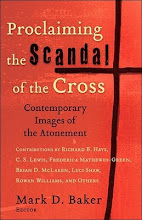
“It is finished.”
When new houses are built, all the skilled workers play their parts—creating a foundation, framing, running wire and pipe, making roofs and walls and ceilings—and then leave for the next project. A clean-up team comes in and picks up all the fragments of the job so that people can move in. The workers still carry a responsibility for the integrity of their work, and they will have to return to fix something if it doesn’t work properly.
However, the workers have no responsibility for what the inhabitants do once they move in. If the marriage collapses, the electrician will not be called to account. If illegal drugs are manufactured in the bathroom, the plumber will not have to answer to the police. The workers’ relationship to the house ends when it is properly completed and ready for occupancy. What happens after that is not their concern. They are finished.
Jesus’ final words on the cross imply a number of things. Truly, Jesus’ life is finished. He is breathing his last, and he will now die, as all humans must. Along with his death, the power of Rome has finished its murderous work on yet another person. For those standing close to the cross, those words might have confirmed what they already believed: All that Jesus had said and done was finished, as was the life they had shared together.
But some other things were finished as well. All that had come to be represented in Jesus—the life of Israel and the life of the entire human race—would no longer be subject to the final word of sin and death. Yes, sin would still rattle its cage throughout the world and every new birth would end in a grave, but their power to pronounce the end of the story was finished. And if we truly believe that the very fullness of God was in and with Jesus, then God’s immersion in the totality of human existence was finished; from conception to death, God’s sojourn in the life of the human race was complete.
Unlike the workers who move on when their work is done, what was finished in the death of Jesus would launch into a new reality with a cosmic purpose. This was not a finishing that was over and done with no relationship to what would come next, but it was rather a finishing that would explode to a new level in the Resurrection (the Greek word for finished implies this purposeful relationship). To the average onlooker, Jesus the failed Messiah who died on Friday was truly finished and had gone the way of others before him. But Sunday was yet to come, and what appeared to be finished would turn reality on its head. Like a seed that appears dried and dead but, when planted in the ground, becomes a living plant, so would the finished, dead body of Jesus enter the tomb and emerge with new life for all.
We humans, who so often lack vision, can easily look around and declare ourselves “finished.” We’ve hit a wall, we’ve made too many mistakes, we’ve missed too many opportunities, and we are finished. But the story in which we are invited to live doesn’t leave us finished as though we’ve reached a silent ending. On one level we may be finished, but in Jesus we find that we can launch into a new life that doesn’t deny what has happened before, but now wraps up the past into a present that brings hope and promise for the future.
Things may no longer look as we imagined they would, but passing from death to a resurrection life rarely keeps things looking the same. The resurrected Jesus was not a reanimated corpse, but a real body from which death and its effects had been banished. There were still the marks of the past in Jesus’ hands, feet, and sides, because what had happened to him was real. The new life, however, wrapped up the past into the new and purposeful life that was launched on Easter.























No comments:
Post a Comment